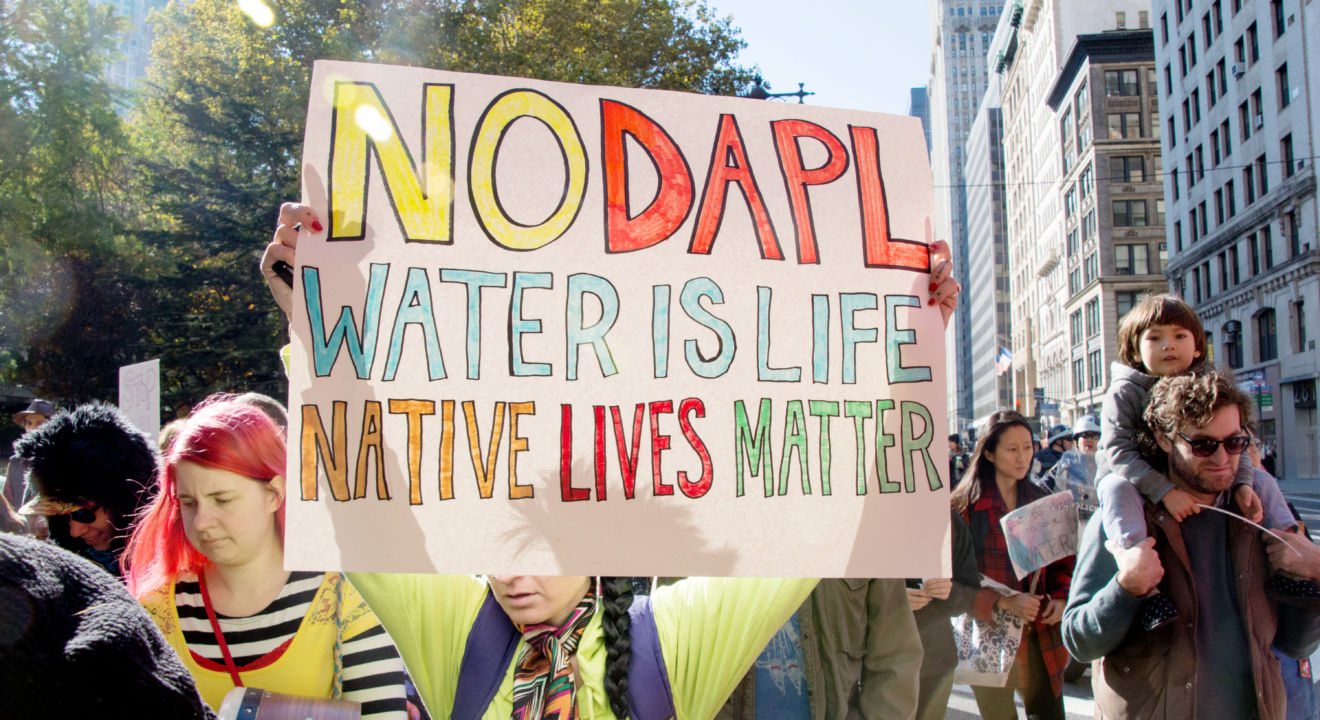Sustainability December 13, 2016


The construction of the Dakota Access Pipeline is at a halt but the tensions between Standing Rock protesters and law enforcement officials are still high.
For months, the Standing Rock Sioux Tribe has been fighting for their Indigenous rights to their ancestral lands and water. And according to them, the fight is still not over.
“We are our own community here and it doesn’t matter what happens between Dakota Access, the governor or the sheriff or whoever because our movement is so much bigger now than just a pipeline,” Aldo Seoane, a member of the Wica Agli Tribal Nations in South Dakota, said in an interview.
Here is a brief timeline of what has happened since the announcement of the North Dakota Access Pipeline construction.
READ MORE: Standing Rock Sioux Tribe: ‘Water is Life’
Energy Transfer’s Dakota Pipeline Project is a new approximately 1,172-mile, 30-inch diameter pipeline that crosses four states. The construction of this pipeline is meant to transport domestically produced crude oil from North Dakota to major refining markets in a more cost-effective way. With this project, an estimated 470,000 barrels of oil will pass through the underground pipeline.
However, protesters, including environmental and tribal groups, argue that the construction of the pipeline not only poses a threat to the Standing Rock Sioux’s sacred sites and ancestral lands, it also jeopardizes the water supply.
As a result of this risk, thousands of Indians from several Native American tribes began their battle by gathering at the Camp of the Sacred Stone. The protesters came together near the construction sites, proclaiming, “It’s about our rights as native people to this land. It’s about our rights to worship. It’s about our rights to be able to call a place home, and it’s our rights to water.”
After months of fighting and little progress, celebrities and various other people across the nation rallied together to fight against the construction of the pipeline. A Change.org petition started by tribe member Anna Lee and the Standing Rock Youth has garnered over 360,000 supporters.
Green Party presidential candidate Jill Stein joined in on the movement and was charged with misdemeanor counts of criminal trespass. “Divergent” actress Shailene Woodley also became a leading face of the cause. She protested along the Native American community and was arrested on Oct. 10 and charged with criminal trespass and engaging in a riot. As she waits to stand trial, she continues to use her platform to help voice the concerns of Native Americans across the nation.
Additionally, many people have used social media as a tool to advance social justice. In November, thousands checked in to the Standing Rock Indian Reservation’s Facebook page to increase awareness of the issue.
READ MORE: #NoDAPL: Meet the Women Fighting to Protect Standing Rock Indian Reservation (VIDEO)
The U.S. Army Corps of Engineers warned the protesters that those who refused to leave the camps could face arrest due to trespassing and the danger of North Dakota’s harsh winter conditions. The campers, however, argued that they weren’t going anywhere.
“We are in for the long haul,” said Chase Iron Eyes, a member of the Standing Rock Sioux Tribe.
And although the U.S. Army Corps of Engineers said first responders would no longer be responsible for providing emergency services to those who remained in the camps, the head of North Dakota’s emergency management services said they would be willing to aid those who needed help during the winter crisis.
“The bottom line here is, if we are in a situation of life and limb, we are going to be humane in anything and everything we do,” said State Homeland Security Director Greg Wilz. “We aren’t going to let somebody out there freeze.”
After months of protesting to protect their water, the Standing Rock Sioux Tribe won a major victory against the construction of the Dakota Access Pipeline. On Dec. 3, the Department of the Army announced that it would look for alternative routs for the $3.7 billion project.
“The best way to complete that work responsibly and expeditiously is to explore alternate routes for the pipeline crossing,” Jo-Ellen Darcy, the Army’s assistant secretary for civil works, said in a statement.
However, even with the government-ordered halt, The New York Times reports that the pipeline’s progress hasn’t really stopped. Many crew members have continued digging and protesters are driving to construction sites as far as 80 miles from camp to try and stop the work.
About 150 miles from the camps, True Companies’ Belle Fourche pipeline located in the western part of North Dakota spilled 4,200 barrels of crude oil, which is more than 176,000 gallons. Most of this oil flowed into the Ash Coulee Creek.
While it’s unclear what caused the break, Wendy Owen, a True Companies spokesperson, said it is possible that the technology used to detect leaks failed because of the “intermittent nature of the flow” of oil through the pipeline.
This spill is important because the Standing Rock Sioux have argued that a potential pipeline rupture could contaminate their water supply and damage sacred lands. Although Energy Transfer has said that the pipeline will pose minimal risk to the water, there have been various other pipeline spills across the nation. True Companies alone has declared 36 other spills since 2006, totaling more than 320,000 gallons of oil.
Because of these fears, the Barack Obama administration has recently announced that it wouldn’t allow Energy Transfer to build the final section of the Dakota Access Pipeline. However, the current issue at hand is President-elect Donald Trump’s plans to allow the company to finish the pipeline.
READ MORE: 5 Facts About Trump’s Secretary of State: Rex Tillerson, CEO of Exxon